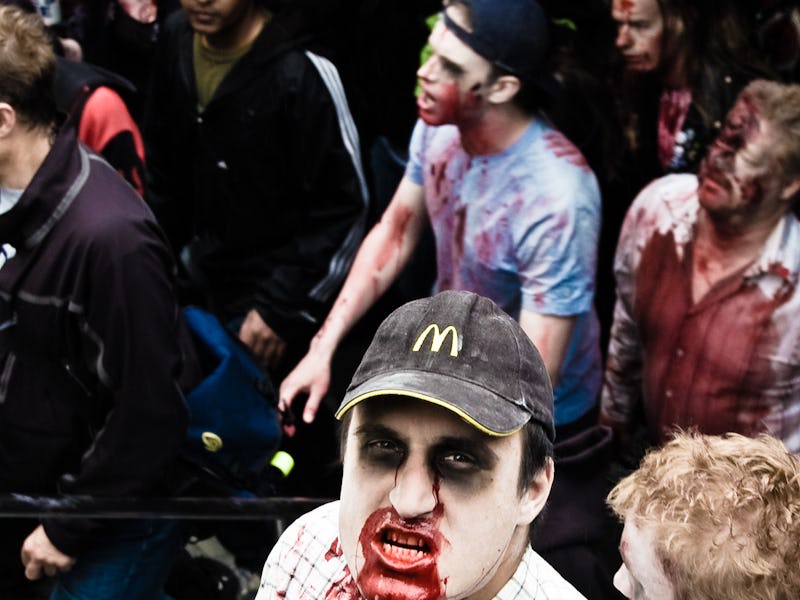What If All the Fake Blood on New Orleans Turned Into Type O Negative?
The weird logic of transubstantiation.

Here at ‘Inverse’, we like to explore horrifying, if unlikely, scenarios, which is why we’ve publicly mulled what would happen if Cleveland’s corpses rose from their graves, if a Tyrannosaur got loose in Minneapolis, and if there was a nuclear meltdown in Kansas. This week, we get real with fake blood.
The invisible hand of the market may just be a severed, plastic gag gift: The National Retail Foundation estimates that Americans will spend $6.9 billion on parties, costumes and decorations. Presumably, that includes fake blood. What if all the Halloween fake blood in New Orleans instantaneously transmogrified, ounce for ounce, into liquid type-o negative human stuff?
To answer that question, we have to figure out how much fake blood there is in New Orleans. But, we can widely and messily estimate, given a population of about 343,000 New Orleans residents, that 64 percent of Americans will celebrate Halloween, and that two of the most popular costumes for adults — zombie and vampire — would lead to the purchase of fake blood.
Let’s say people in New Orleans are no more or less likely to celebrate Halloween than other people, and 10 percent, of those revelers who dress up or decorate, 44 percent of celebrants, buy blood. That’s about 10,000 people buying blood. At $10 per pint, that fake blood would generate a hundred thousand dollars of revenue in New Orleans, which doesn’t sound too far-fetched. Unfortunately, we can’t be more exact because the NRF doesn’t track anything more granular than Halloween decorations writ large and the Philadelphia-based fake blood distributor FX Warehouse listened to half our query then (accidentally?) hung up.
The sticky situation resolves in three sanguinary branches:
The Good: Type O — though no longer considered the “universal donor” thanks to potential antibody concerns — can still be given to emergency victims in a pinch, when the risk of fatal blood loss outweighs that of an adverse antibody reaction. Once the populace is aware that New Orleans is suddenly flush with real blood, it’s conceivable that healthcare workers would do a run on any fake blood left in stores. (The U.S., as a whole, is desperate for donor blood.) The trick would be to get the blood fairly expediently; the shelf-life of blood is up for debate but blood is stored on ice to stay fresh.
The Bad: The appeal of non-toxic fake blood is that you can put it everywhere — drool for vampires, wounds for zombies, or the whole-hog drenched Carrie look. A human blood bath, on the other hand, is less festive, and should be rinsed with cold water (and spit out).
The Dangerous: Bloodborne illnesses, by their nature, don’t tend to survive for long outside of pumping veins. An exception is hepatitis B, which can survive outside humans for at least seven days, according to the CDC. There’s no reason why bottles or tubes of fake blood should have hepatitis B, but that’s a holiday memory you wouldn’t want to have. If there is blood, there will be baths.